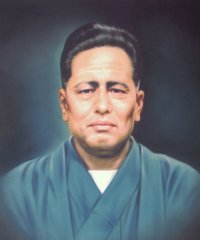

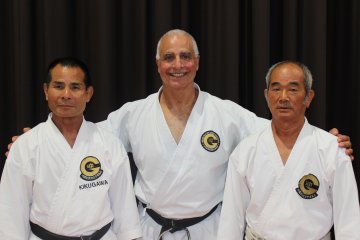
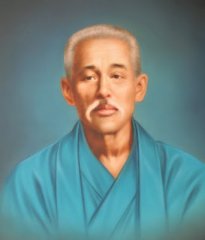
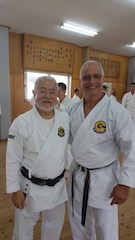
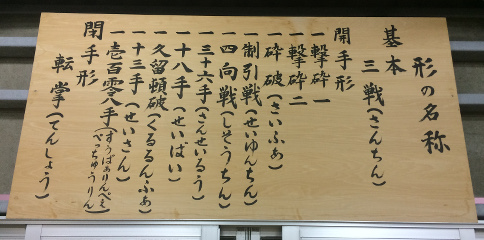
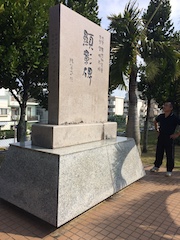
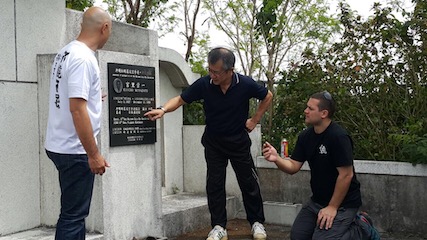
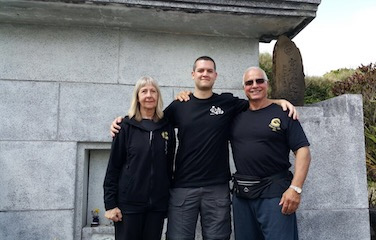
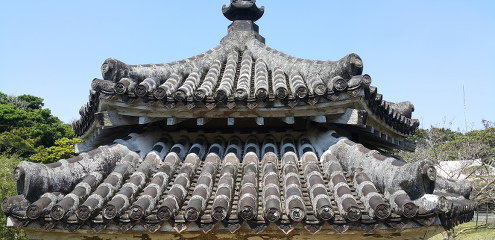
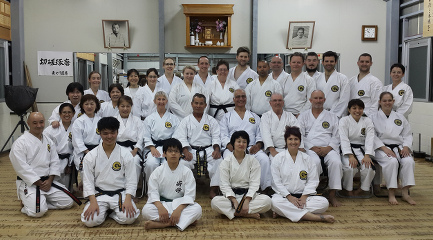

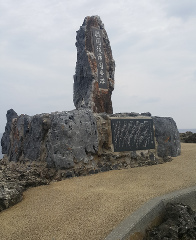


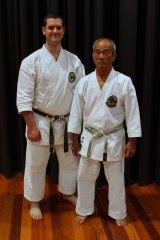
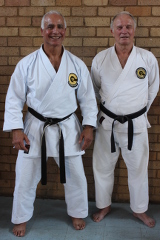
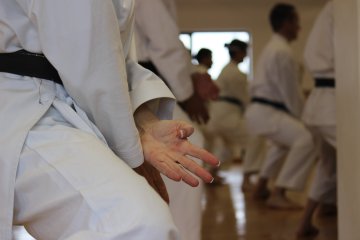




















You Are Here: About » Goju-Ryu Kata » SeisanSeisan - 13 Hands: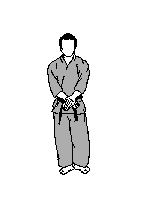  The opening three Sanchin dachi steps with the morote chudan uke (double middle level block) and chudan gyaku tsuki (reverse stomach punch) appears to be similar to that as in Sanseiru kata, BUT, in performance and application they are NOT! This is a powerful, fighting kata with many superb close-in fighting techniques.
Seisan means "13 Hands." Thirteen is also a number representing good luck and prosperity in Chinese numerology. This kata contains many unusual techniques and demonstrates the difference between Go (Hard) and Ju (Soft). Seisan is thought to be one of the oldest kata widely spread among other Naha-te schools. Shito-ryu has its own version and different versions are now practised even in Shuri-te derivatives like Shotokan (called Hangetsu) and in Wado-ryu (called Seishan). Seisan was a favourite kata of Jin'an Shinzato and his specialty kata initially. To better understand Seisan, Sanseiru and Seipai requires a more defined understanding of the language and culture of the people from which these Kata originated. Seisan is believed to be the oldest of all Okinawan Goju-Ryu Kata. There is a version of Seisan practiced in the Shorin schools, but in comparison, the Goju-Ryu version is longer and much more complex. Seisan is also practiced in the following styles of Chinese Boxing: Dragon, Lion and Monk Fist
|